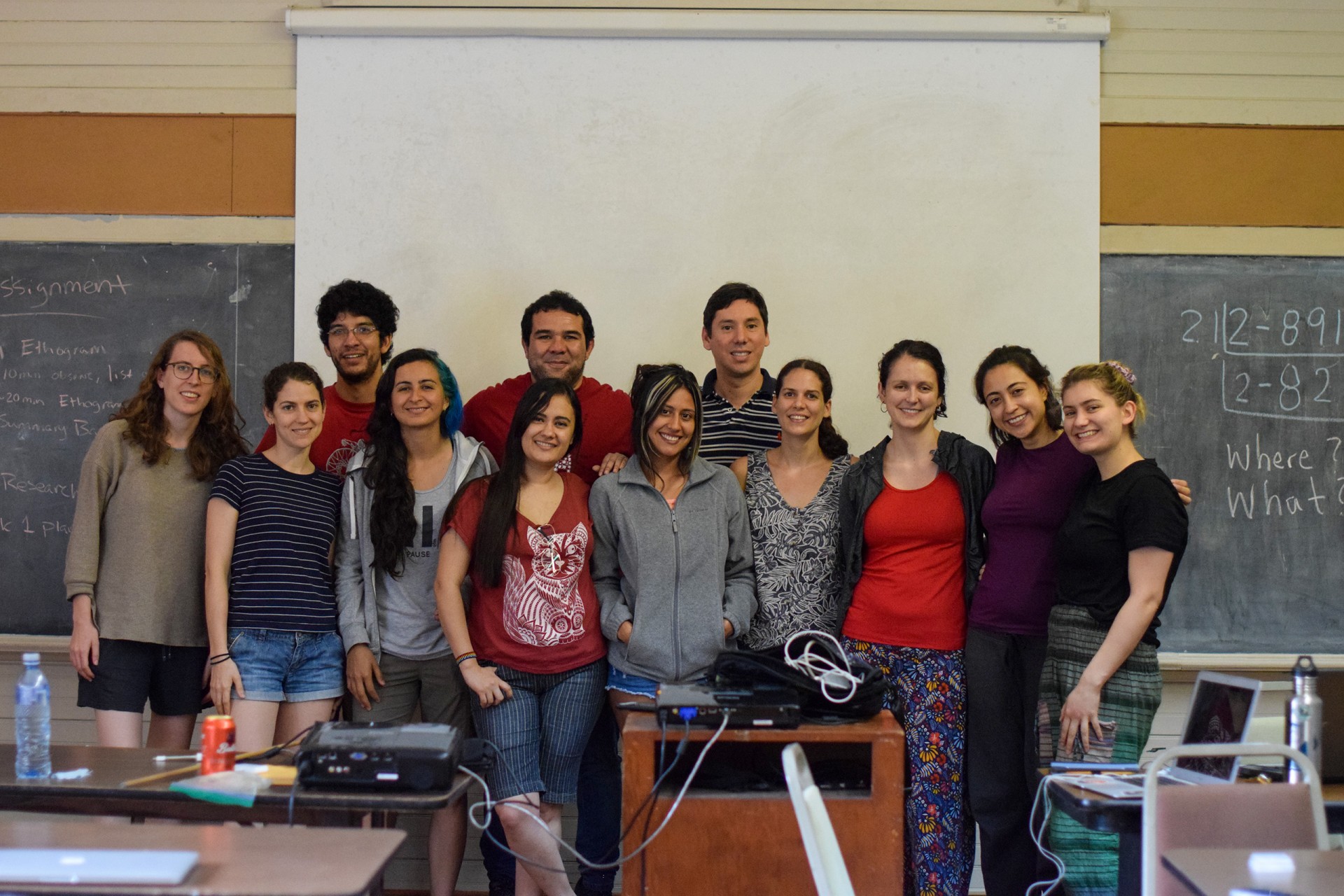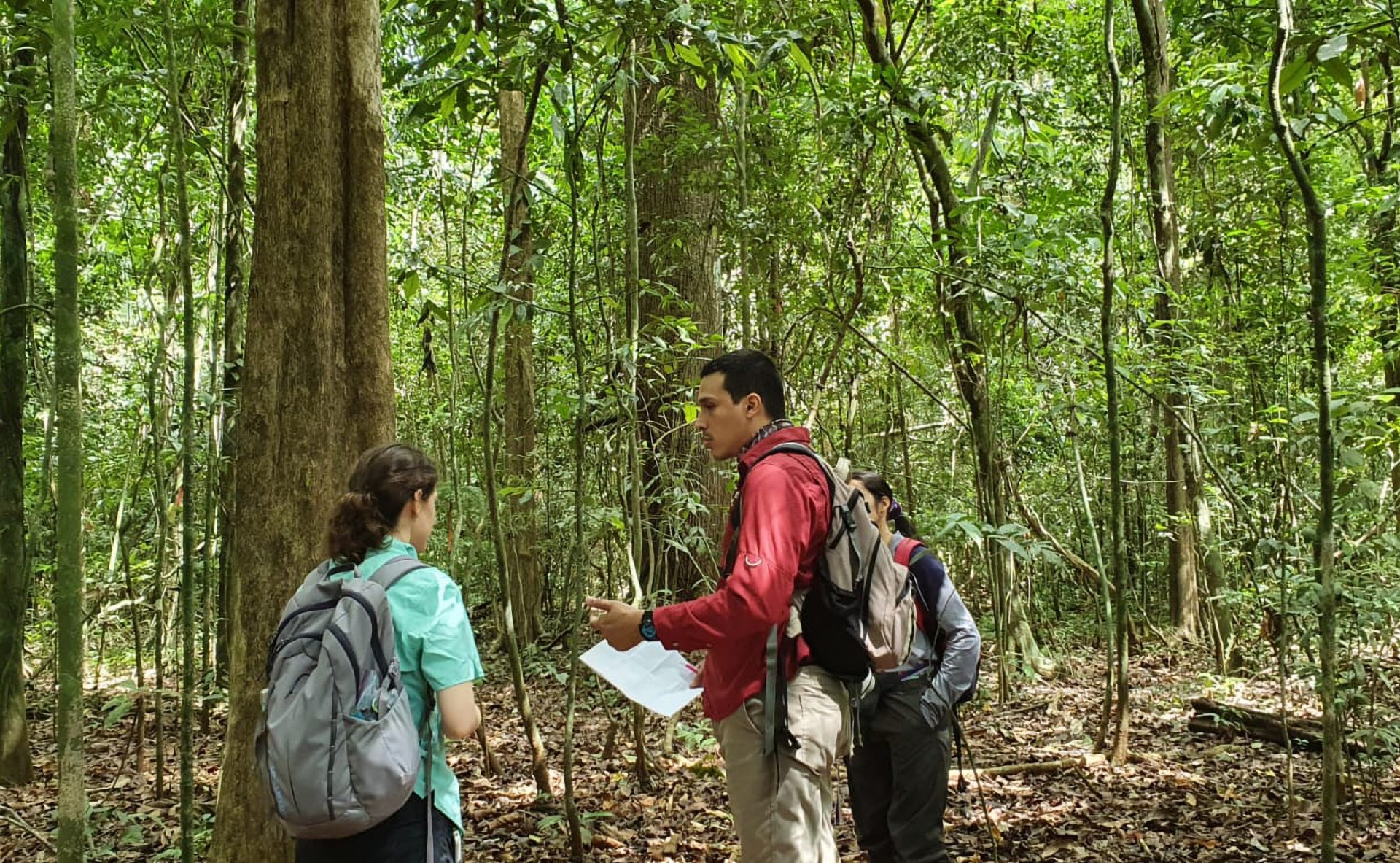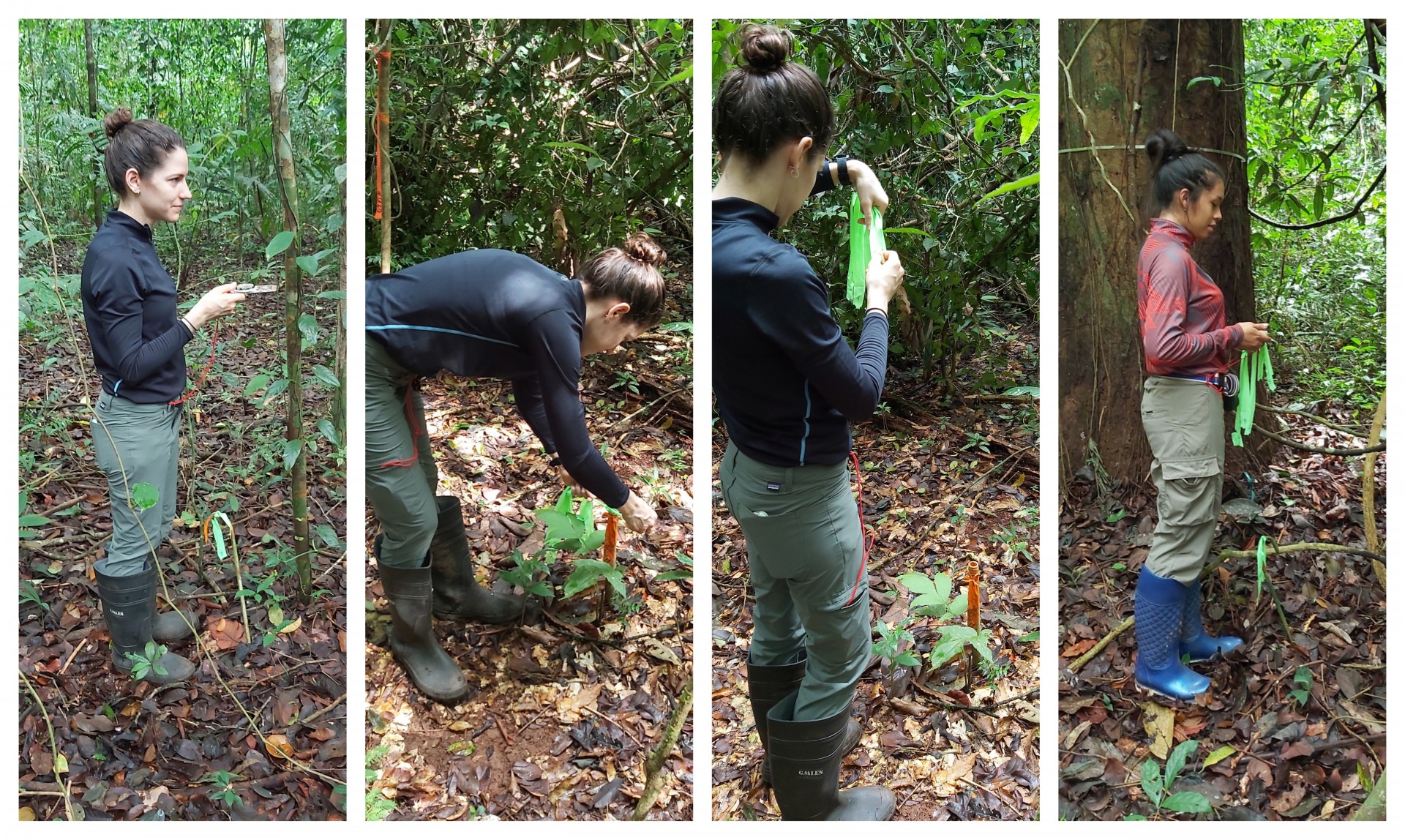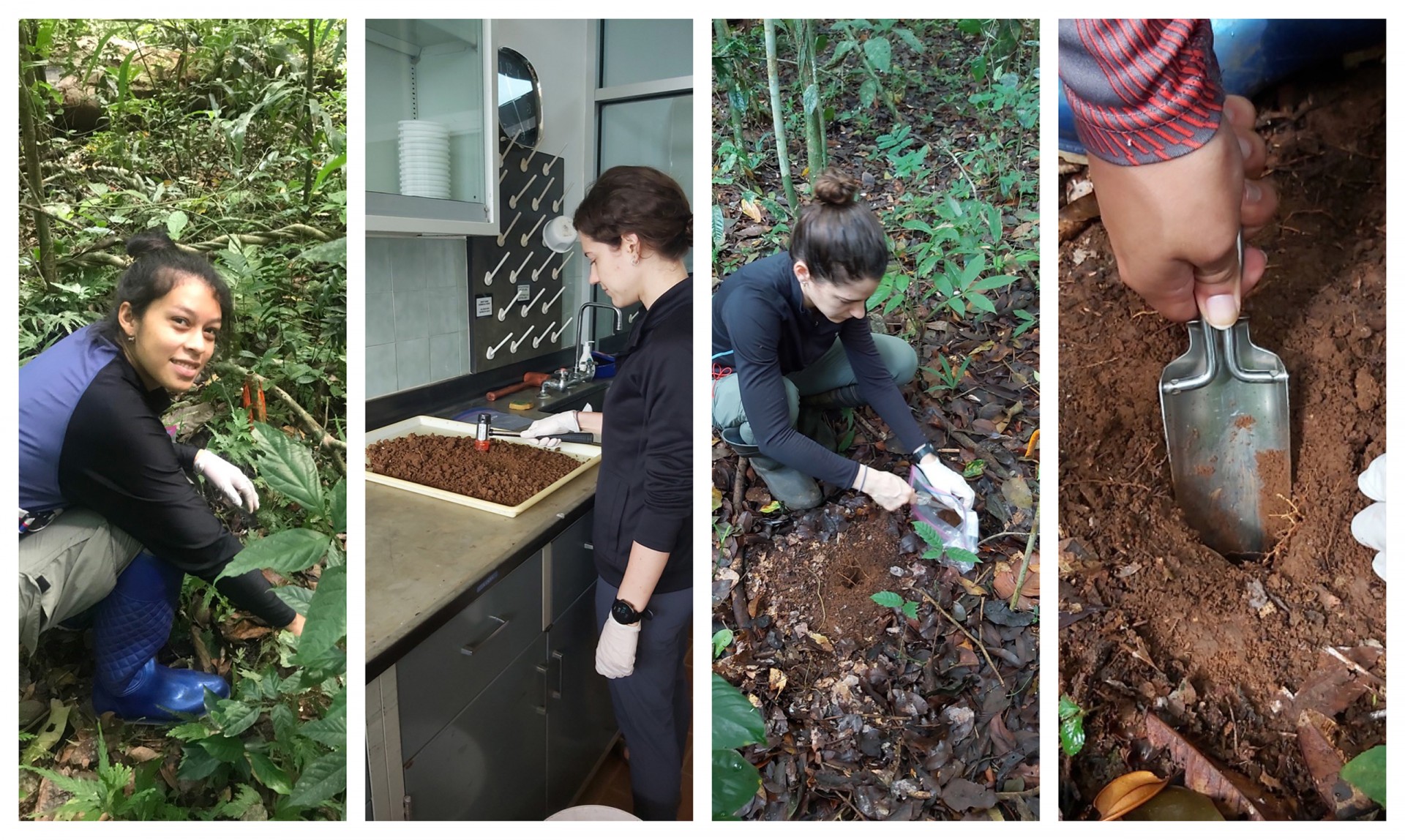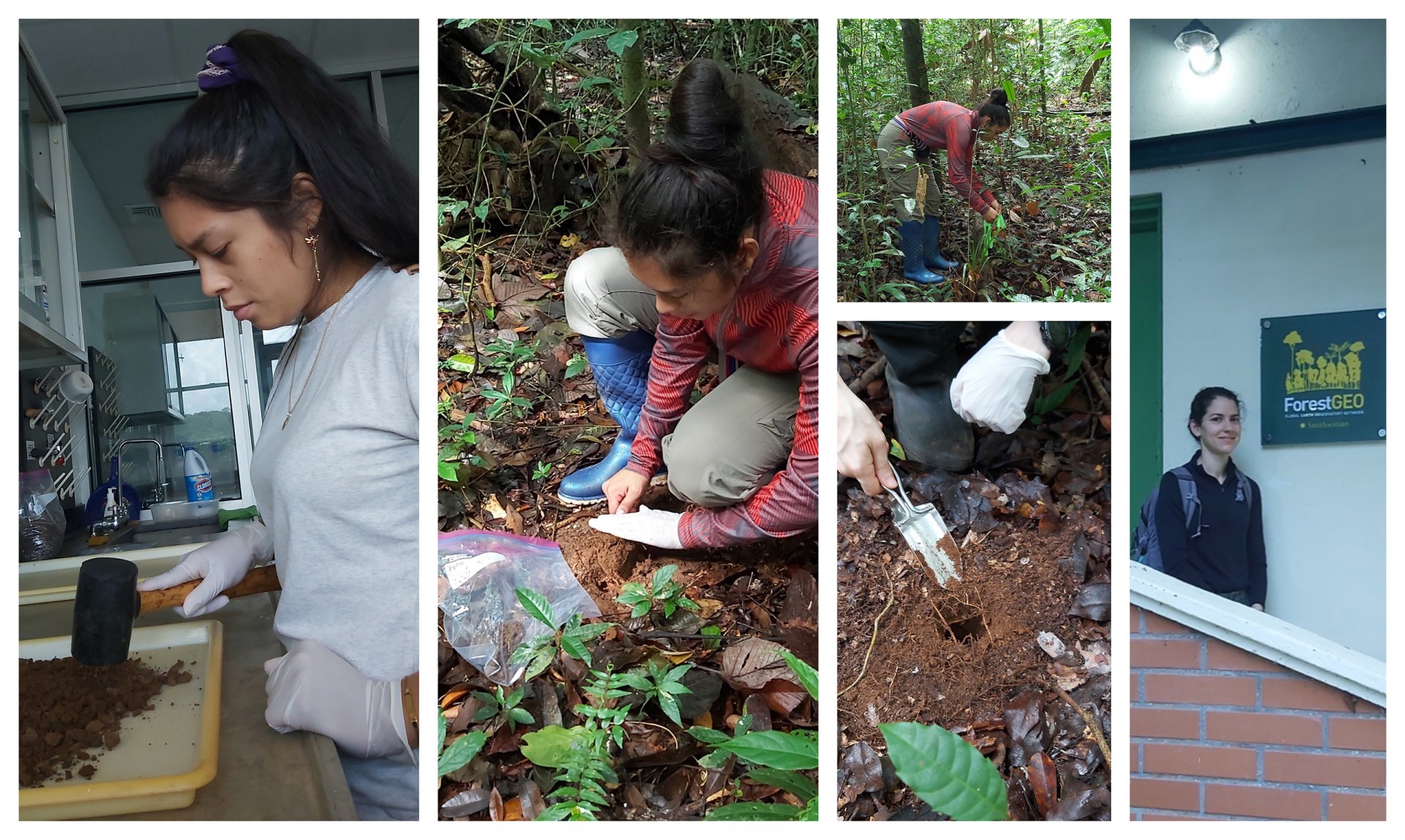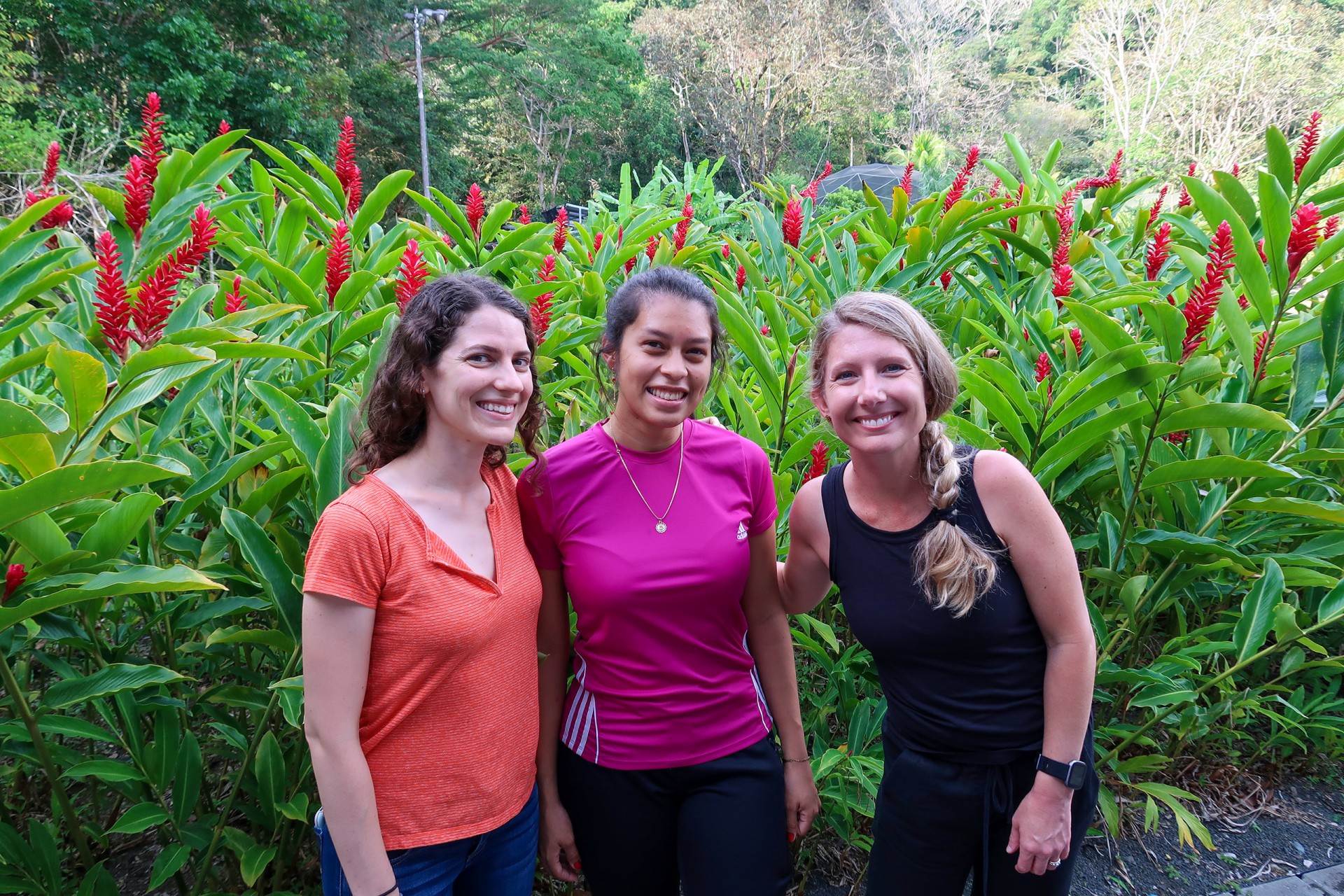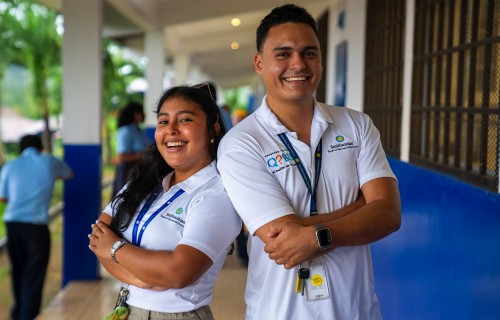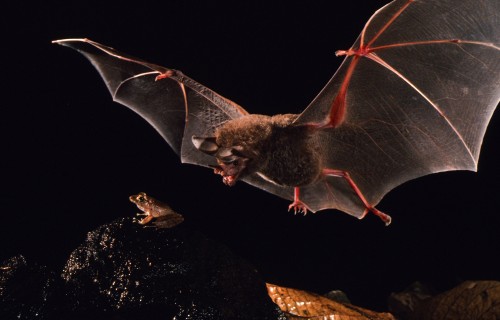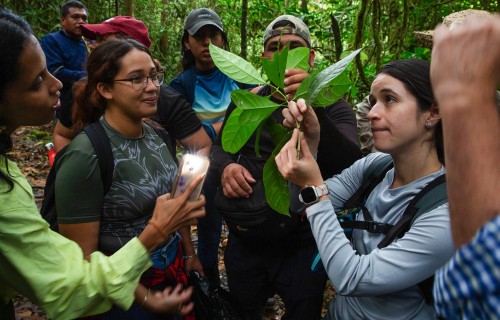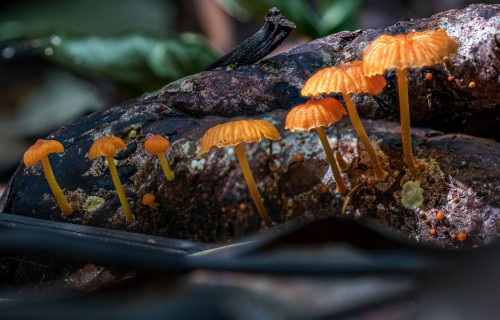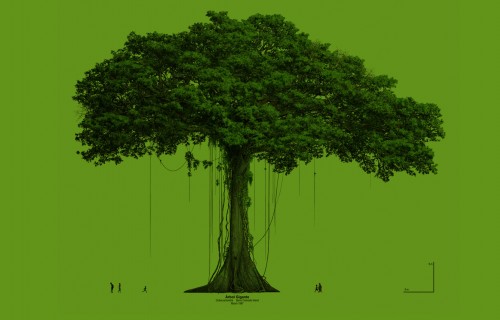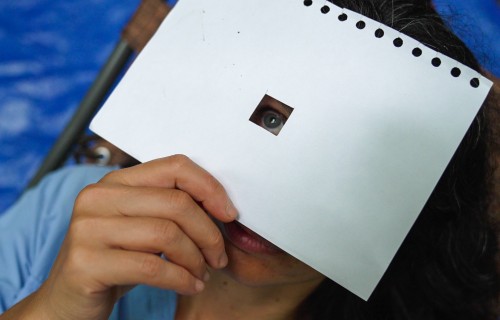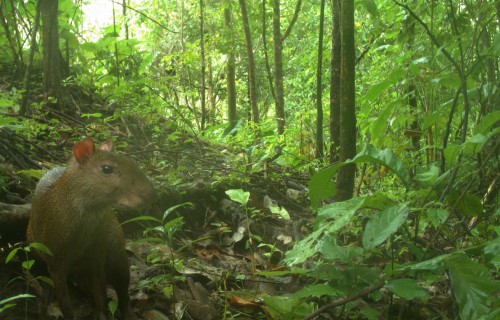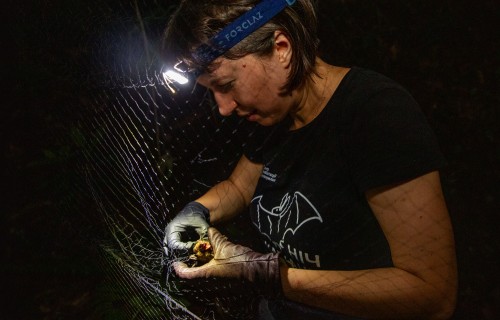Mutualism under pressure: new research in Panama shows a plant’s ability to keep its defender ants happy
Camille
Delavaux
My Journey to Barro Colorado Island
(Part 3 of 3)
Text by Camille Delavaux
STRI from Myth to Reality: Working on Barro Colorado Island as Part of a Community.
Every tropical ecologist knows about Barro Colorado Island (BCI): this place where the impossible has been achieved for decades. The small island in the middle of the Panama Canal is probably the most studied 15 square kilometers of tropical forest in the world. From the fraught history of the building of the Panama Canal came this gem of a field site that laid the foundation for groundbreaking work across the canal area and the rest of this exceptionally biodiverse country. From my early readings and conversations with other ecologists, I learned about this mythical island in Panama. My lens was one of plant-microbial interactions: how invisible microbes shaped the forest community aboveground. Early on, BCI research and STRI scientists increased the visibility of these invisible microbes by studying pathogens, mutualisms - beneficial partnerships - and the in between. They integrated theory, experiments, and observations to quantify the impact of these microbes on plant health and the coexistence of so much forest diversity. I dreamt of being part of this history and adding a piece to this puzzle of how these tropical forests manage to sustain this vast diversity.
While completing my Master’s at Yale University, I became involved in the lab of Liza Comita, a STRI research associate. I worked with Liza and a PhD student in her lab, Jenalle Eck, on a project to understand how microbes influence growth within a plant species in Panama. My microbial experience up until then was focused on the mycorrhizal fungi, a typically beneficial partnership between 80% of the plants in the world and this group of fungi. These fungi help plants access nutrients and water that they can’t on their own, kind of like a very thin extension of the root system. Most plants in the tropics, and BCI, form this relationship. I worked with the team on this project by quantifying root colonization of these fungi to complement the massive effort Jenalle and collaborators had done comparing plant growth in different soils. After remotely working with samples and data from Panama with Liza and Jenalle, I finally set foot in Panama in January 2020 through a new STRI partnership with the University of Kansas at the end of my PhD. In two short weeks, as part of a short course, I was introduced to the STRI community, research stations, and ongoing research projects. I was able to meet other researchers and learn about work on bats, mosquitos, birds, forests and more. I was also fortunate to meet Erin Spear, an ecologist and postdoctoral research fellow at the time. The pandemic started about three weeks later and it was clear that I would not be able to return for my planned three-month independent project However, I maintained my connection to STRI by working on a project remotely in partnership with John Schroeder, a postdoctoral researcher who had set up a large seedling experiment on Gigante Peninsula, on the edge of the Panama Canal. I sequenced DNA from these seedlings and soil surrounding them. After almost four years of work, we are finding some exciting results of what controls the underground world of microbes plants associate with and how this in turn impacts the fate of seedlings.
A group photo of the course Camille took at STRI in 2020, before the Covid 19 pandemic. Credit: Dirley Cortés.
After my PhD, I started my current postdoctoral position at ETH Zurich in Switzerland working in the Crowther lab and closely with lead scientist Colin Averill. I was excited to understand how plant-microbial interactions relate to forest structure and diversity, but at a global scale. These plant microbial interactions have consequences for individual plant growth and survival, but also the structure of the entire community that makes up the forest. From past work, an important part of which was conducted at STRI, we know that forest diversity is, at least in part, the result of the microbes plant associate with at a local scale, but no one has attempted the daunting task of understanding how differences in these microbes lead to different forest diversities across the world. Why are there over 300 species in the 50 ha quadrat in Panama, but only 13 in a forest in the Netherlands?
To understand how genetic diversity of microbes can help explain forest diversity, I began reaching out alongside collaborators to ForestGEO network plots to ask for soil samples. Ultimately, our goal is to understand which microbes influence forest structure and diversity. Although we received many soil samples as part of this project, there was an obvious gap in our samples: tropical forests. What a great excuse to finally work in Panama at STRI! I reconnected with Erin Spear, now STRI’s newest Staff Scientist focused on forest microbial ecology. We had long zoom calls and many messages to go over every step of the trip and collection. Without having worked together before, she gave months of time and support to make my early dream of working on BCI a reality. After many months of planning and working closely with Erin, I returned to Panama in February 2022 to do my favorite thing: dig up some soil and talk for hours about science.
David Mitre showing Omayra and I how to navigate around the 50 ha plot.
On an early February morning 2022, Omayra Melendez and I met at the dock in Gamboa to take the boat to Barro Colorado Island. In our short month on BCI working within the 50 ha plot, we were able to collect our soil samples and meet amazing scientists. During our time on BCI, we learned about other projects and research on the island: the role of lightning in tree death, the complex ecosystem inside figs, and recent changes in precipitation on the island. The history of the island, with the infrastructure and support from people, have made working in this ‘difficult’ environment a breeze. Yes, we had to lug down tens of kilos of soil samples down from the top of the island. Yes, we were besieged by ticks and chiggers. Yes, it was hot and humid, and I almost thought my computer gave up on me. But, in the end, we had the census team welcome us, orient us to the plot, and support us along the way. What would have taken us weeks to figure out, they told us in two days. We borrowed equipment from the guards, mechanics and other researchers to complete our sample preparation.
Although my experience is relatively short at STRI, I know it is a special place. It is a great institution both for its research, but also, importantly, for its community. Scientific research does not occur as the result of one person, or even a few, but is the result of a strong community. My early involvement and current work are only possible due to the advice and support openly shared across the community. The strength of STRI is just that: its community that shares a passion for understanding the natural world and one for helping each other. As for Omayra and I, we will go our separate ways for now, but I’m sure we’ll run into each other again, on or off of the BCI trails.
Omayra, Erin and I outside the Gamboa labs.

